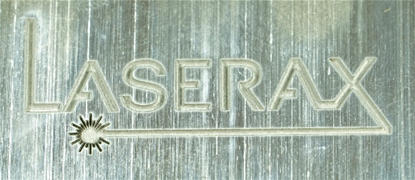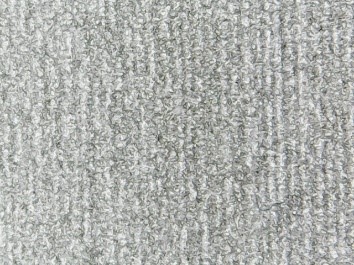Deep Laser Engraving Performance on Metal Surfaces
This technical paper reports the deep engraving speeds and surface finishes obtained during tests performed by Laserax using the LXQ-HP laser system. Measurements were taken for typical engraving depths on steel and aluminum, and this, at different power levels.
The LXQ-HP series includes laser engraving systems developed and manufactured by Laserax, offering up to 500W of laser power. The system’s parameters can be modified to obtain different depths and finishes.
Deep engraving
 Deep laser engraving is a similar process to laser etching and engraving, but with significant deeper ablation levels (>300 µm). It can be used for various applications, such as:
Deep laser engraving is a similar process to laser etching and engraving, but with significant deeper ablation levels (>300 µm). It can be used for various applications, such as:
- Stamping plate engraving
- Mold insert engraving
- Removal of material
- Deep logo engraving
Deep laser engraving is highly precise and can either be fully or semi-automated. It is also a great alternative to engraving techniques like chemical etching and mechanical engraving, offering advantages like:
- No abrasive media
- Lower operation cost
- Lower maintenance
- Personalized surface finish
- Safer
- Easy to automate
- Homogeneous smooth finish
- Repeatable process
- No part wear
- High resolution engraving
Surface cleaning and hardening
The same laser system can be used to clean and prepare metal surfaces prior to laser engraving, removing contaminants such as paint, oxide, dust, rust, mill scale, and so on. It can also be used to harden the parts after etching, making them more resistant and robust so that they last longer.
Deep engraving speeds
The engraving speed of a laser system is affected by four key factors: the engraving depth, the laser power, the metal alloy, and the engraving size.
The following table reports deep engraving speeds for common alloys.
| Laser power | Aluminum | Steel |
|---|---|---|
| 100W | 0.41–0.70 | 0.05–0.11 |
| 200W | 0.70–1.27 | 0.08–0.26 |
| 300W | 0.81–1.81 | 0.09–0.37 |
| 500W | 1.00–2.51 | 0.11–0.54 |
Engraved surface finish
Deep laser engraving is a process that is uniform, personalized and precise. The resulting surface finish is consistently smooth. As shown in the pictures, even the edges are smooth.
Smooth surface finish (aluminum)

Cross-section of the engraved surface, showing smooth edges

3D rendering of the engraving process
